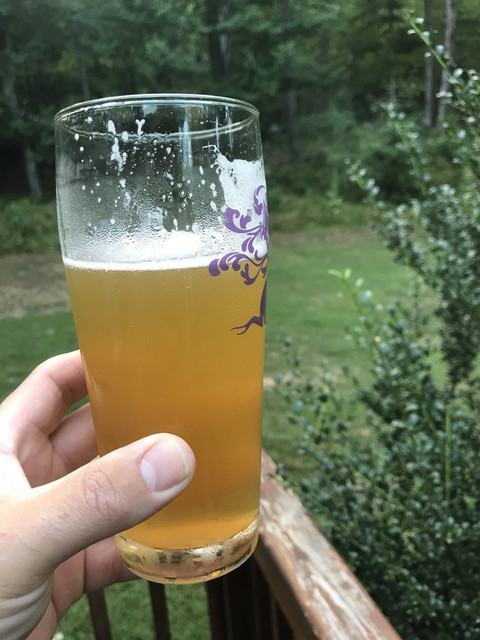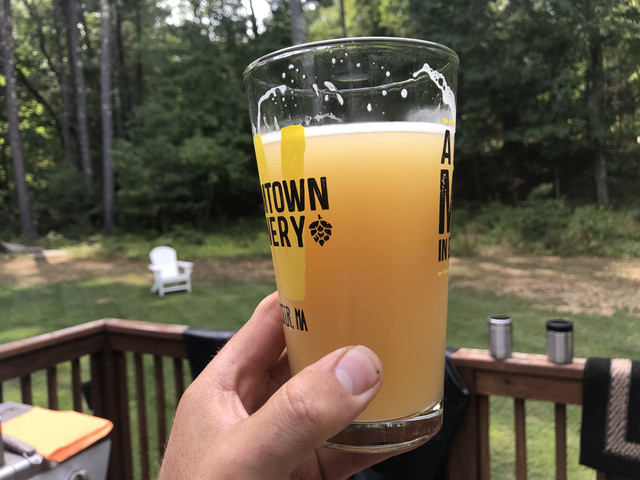OK so Ive seen the comments for and against using total oil content as a way to decide hop ratios in order to get a flavor/aroma profile someone is shooting for. From the peeps,
@Dgallo @couchsending @SanPancho, that have been talking about this, I will just say that I am FAR more inexperienced than all of ya, but I thought Id chime in anyway on my thoughts from the perspective of a new brewer. My classification of "new" is well justified as I had my first brew day in mid-january of this year, but I have at least been hard at work/fun at learning as much as I can and brewing lots (by my standards) having just kegged my 24th batch (5gals) this past week and ~16 of them have been these NEIPA styles.
So when I started brewing I was copycatting reciepes just to get my processes down but quickly got curious to start designing my own and naively took the strategy of doing 1:1:1 type ratios of the hops chosen for said beer. The beers were good overall. However, when I took my first swing at the ever popular citral-nelson-galaxy hop combo I used nearly a 1:1:1 ratio again. it was more like 1:1:0.9 with having a "little" less galaxy because my previous experience I knew it was potent. Nevertheless I was very disappointed because I got all galaxy with citrus and none of the white wine from nelson that I had previously gotten from nelson on a previous brew. This was also a good example of my own experience telling me something was off. Don't get me wrong, the beer was still damn good because who doesn't like galaxy?

So I started more looking at all the different oils of every hop and that was daunting especially after reading Jannish's book too lol. So I thought Id start simplifying and look at total oil content as a surrogate of "potency" to better balance the hop flavor/aroma at the design stage so that I could get the profile I was expecting/wanting. I also picked
@Dgallo brain in his TIPA thread about how he chose his hop ratios and after that discussion, decided to give Citra/Nelson/Galaxy another try. Despite galaxy being MUCH higher in oils than nelson, I went with a 1.75 (nelson): 1 (galaxy) : 1.25 (citra) ratio. On this second try, BOOM! white wine! the nelson came through and still had all the great flavors and aromas from galaxy and citra as well. I was very pleased.
So ever since, I too have been using this concept at the design stage of my beers. I feel that it is VERY useful especially for inexperienced brewers who have little experience to lean on when designing beers and the strategy will definitely get you "in the ball park" of what you want/expect from the profile.
I completely understand there are TONs of other variables at play and Im not naive enough to think that going by total oils alone is the "golden ticket", but again, its a nice simplified way to get you in the ball-park and as experienced is gained, I will tweak them even more.
The only issue with using total oil content from my point of view is the VAST range of reported specs on total oils leaving the home brewer to decide on an "average" total oil content. For example, YVH lists 2020 galaxy as 2.1ml/100g, the 2019 galaxy was 1.8-3.0ml/100g, but BeerCo lists galaxy as 3.0-5.0ml/100g, and BSG has galaxy at 2.4-4.0ml/100g. So this is a total range of ~2.0-5.0 which is HUGE. So deciding on an expected total oil content can be difficult depending on the source.
Nevertheless, I will continue to read new research on contributions to hop flavor and aroma and despite research suggesting that theres just too many other variables that contribute, I don't think thats a reason to discount using total oil content as a viable metric at the beer design stage all together. It has worked for me as a noob in that at least the flavor profile is close to what I was expecting/wanting from the design to finished product. It is easy to do as well which is a plus.
Sorry for long post, but thats my two cents (or how much you think its worth anyways).

Cheers!































![Craft A Brew - Safale S-04 Dry Yeast - Fermentis - English Ale Dry Yeast - For English and American Ales and Hard Apple Ciders - Ingredients for Home Brewing - Beer Making Supplies - [1 Pack]](https://m.media-amazon.com/images/I/41fVGNh6JfL._SL500_.jpg)




























